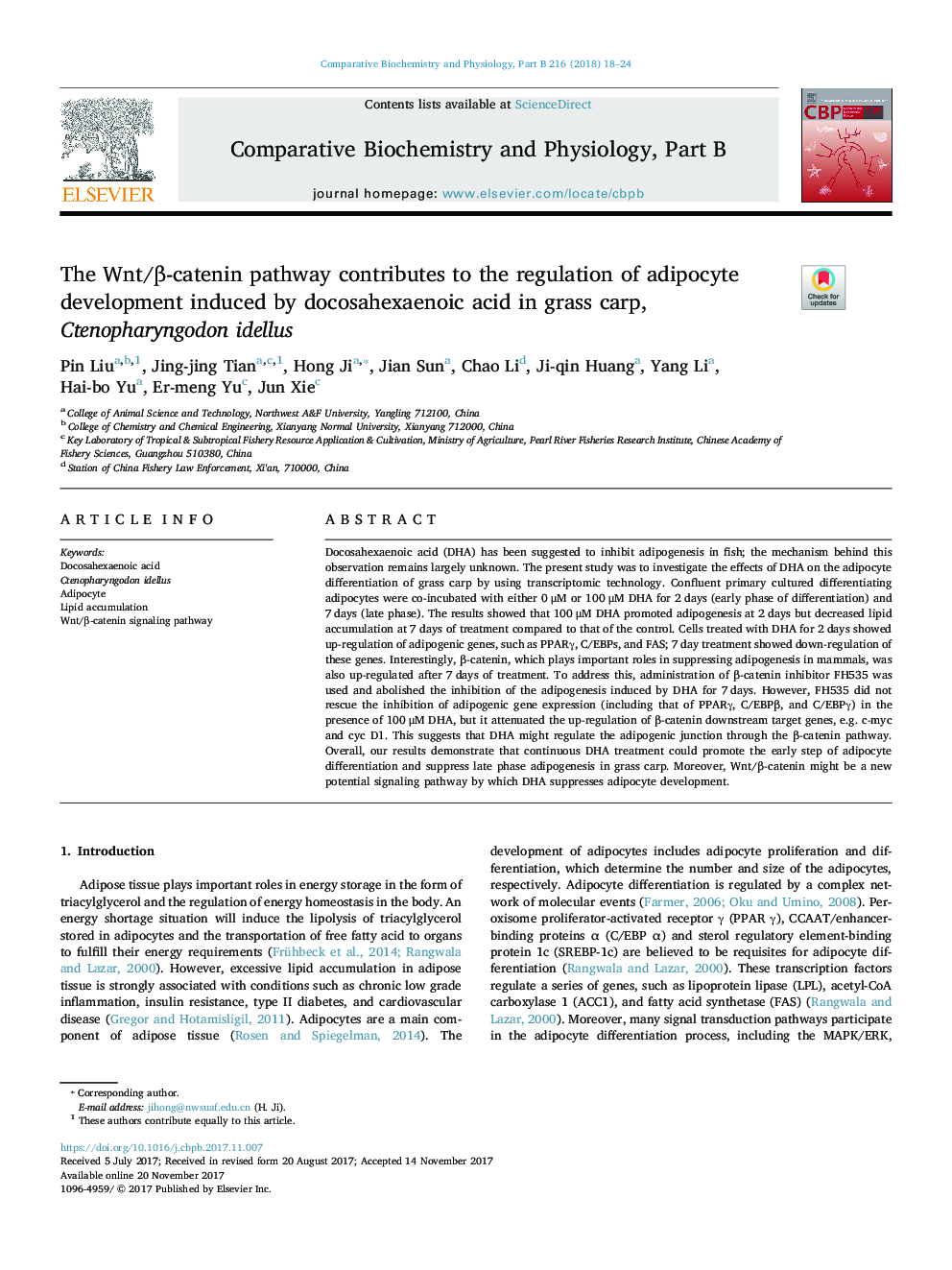| Article ID | Journal | Published Year | Pages | File Type |
|---|---|---|---|---|
| 8318846 | Comparative Biochemistry and Physiology Part B: Biochemistry and Molecular Biology | 2018 | 7 Pages |
Abstract
Docosahexaenoic acid (DHA) has been suggested to inhibit adipogenesis in fish; the mechanism behind this observation remains largely unknown. The present study was to investigate the effects of DHA on the adipocyte differentiation of grass carp by using transcriptomic technology. Confluent primary cultured differentiating adipocytes were co-incubated with either 0 μM or 100 μM DHA for 2 days (early phase of differentiation) and 7 days (late phase). The results showed that 100 μM DHA promoted adipogenesis at 2 days but decreased lipid accumulation at 7 days of treatment compared to that of the control. Cells treated with DHA for 2 days showed up-regulation of adipogenic genes, such as PPARγ, C/EBPs, and FAS; 7 day treatment showed down-regulation of these genes. Interestingly, β-catenin, which plays important roles in suppressing adipogenesis in mammals, was also up-regulated after 7 days of treatment. To address this, administration of β-catenin inhibitor FH535 was used and abolished the inhibition of the adipogenesis induced by DHA for 7 days. However, FH535 did not rescue the inhibition of adipogenic gene expression (including that of PPARγ, C/EBPβ, and C/EBPγ) in the presence of 100 μM DHA, but it attenuated the up-regulation of β-catenin downstream target genes, e.g. c-myc and cyc D1. This suggests that DHA might regulate the adipogenic junction through the β-catenin pathway. Overall, our results demonstrate that continuous DHA treatment could promote the early step of adipocyte differentiation and suppress late phase adipogenesis in grass carp. Moreover, Wnt/β-catenin might be a new potential signaling pathway by which DHA suppresses adipocyte development.
Keywords
Related Topics
Life Sciences
Biochemistry, Genetics and Molecular Biology
Biochemistry
Authors
Pin Liu, Jing-jing Tian, Hong Ji, Jian Sun, Chao Li, Ji-qin Huang, Yang Li, Hai-bo Yu, Er-meng Yu, Jun Xie,
